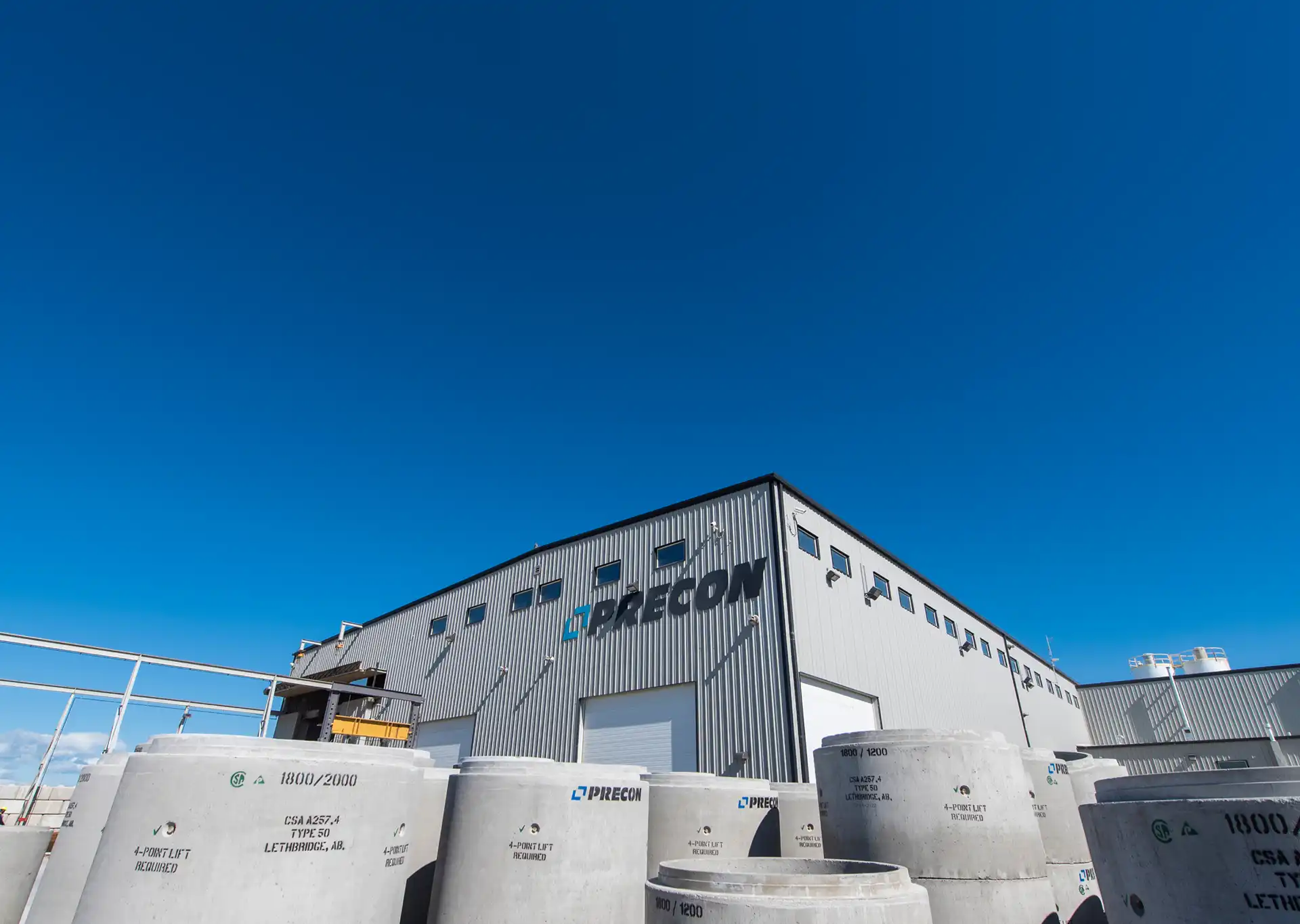2019 Northwest Storm Trunk Project
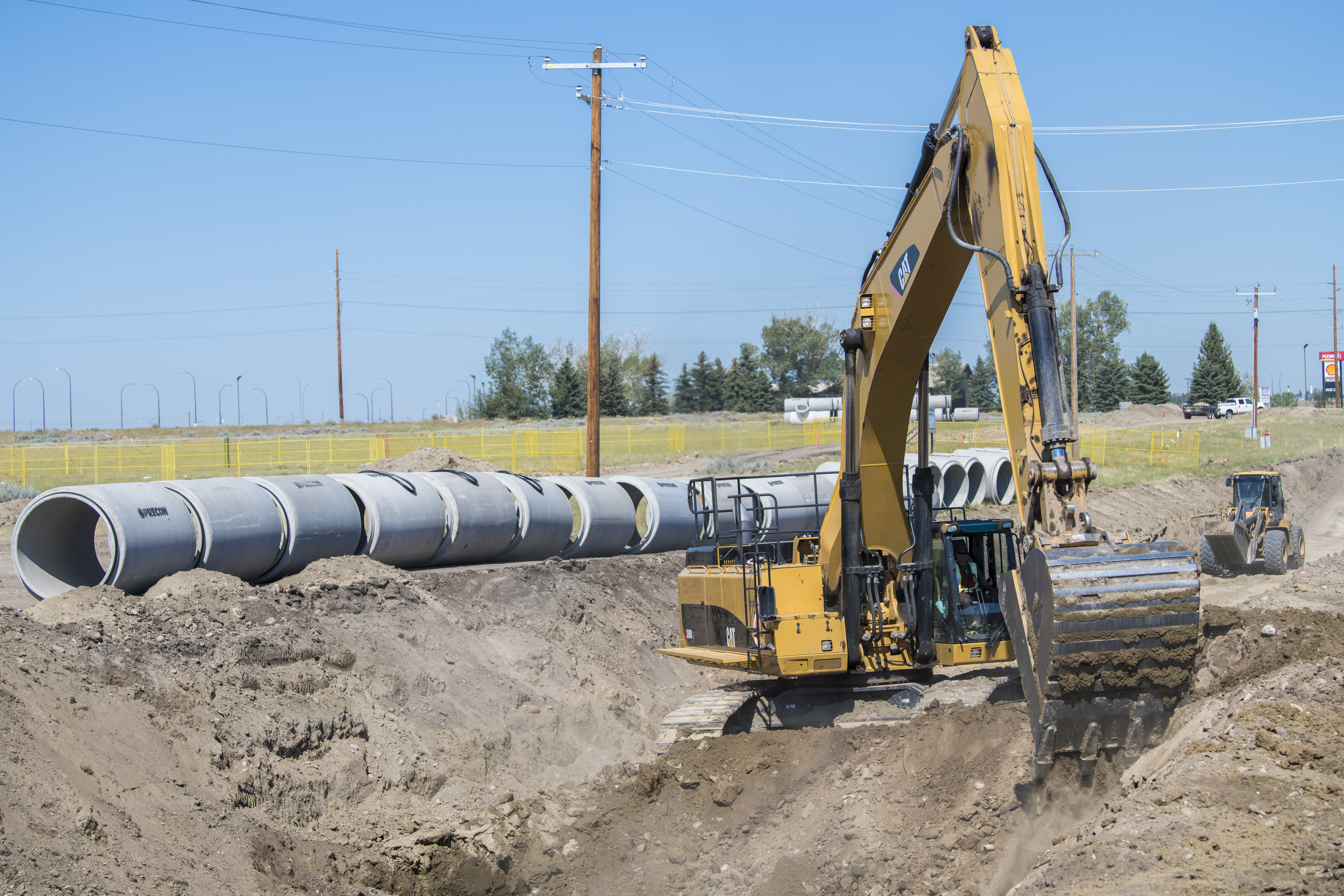
Owner: City of Medicine Hat, Municipal Works Department
Designer: MPE Engineering Ltd.
General Contractor: BYZ Enterprises Ltd.
Location: Medicine Hat, AB
CCPPA Article: City of Medicine Hat storm water drainage project
The existing storm water drainage system in the northwest sector of the city of Medicine Hat, Alberta was over capacity and could not meet the demands of the continual commercial and industrial growth in the area. The City of Medicine Hat imposed development restrictions in the sector until a solution could be found to relieve the capacity issues. Furthermore, the high traffic intersection of Box Springs Road & Saamis Drive NW would flood frequently during rain events and would often require closure for public safety.
In 2016, the City of Medicine Hat decided to proceed with the Northwest Storm Trunk project to install a new storm water trunk main to address the issues. The Northwest Storm Trunk will convey storm water discharged from several existing and proposed Storm Water Management Facilities to an outfall, discharging to the South Saskatchewan River.
The City of Medicine Hat engaged MPE Engineering Ltd. (MPE) through a request for proposal process to provide storm water modeling, preliminary design, detailed design, tender documents, contract administration, site inspections, and quality assurance testing for the project.
The Northwest Storm Trunk alignment closely followed a proposed alignment for a sanitary sewer trunk main that was also being planned for the northwest sector. The designs of both trunk mains were completed simultaneously by MPE and combined into one construction tender.
Generally, the project included the design of a storm water and sanitary sewer trunk main, railway crossings, pipeline crossings, river outfall upgrades, energy dissipation structures, roadway design, and a storm water dry pond.
The design was completed, and the project wastendered for construction in March 2018. The construction contract was awarded to BYZ Enterprises Inc., of Medicine Hat. Construction began in June 2018 and is expected to be complete in October 2019.
Technical scope for Northwest Storm Trunk included the following concrete pipes:
- 880m of 1,350mm diameter Class III RCP
- 1,275m of 1,350mm diameter Class IV RCP
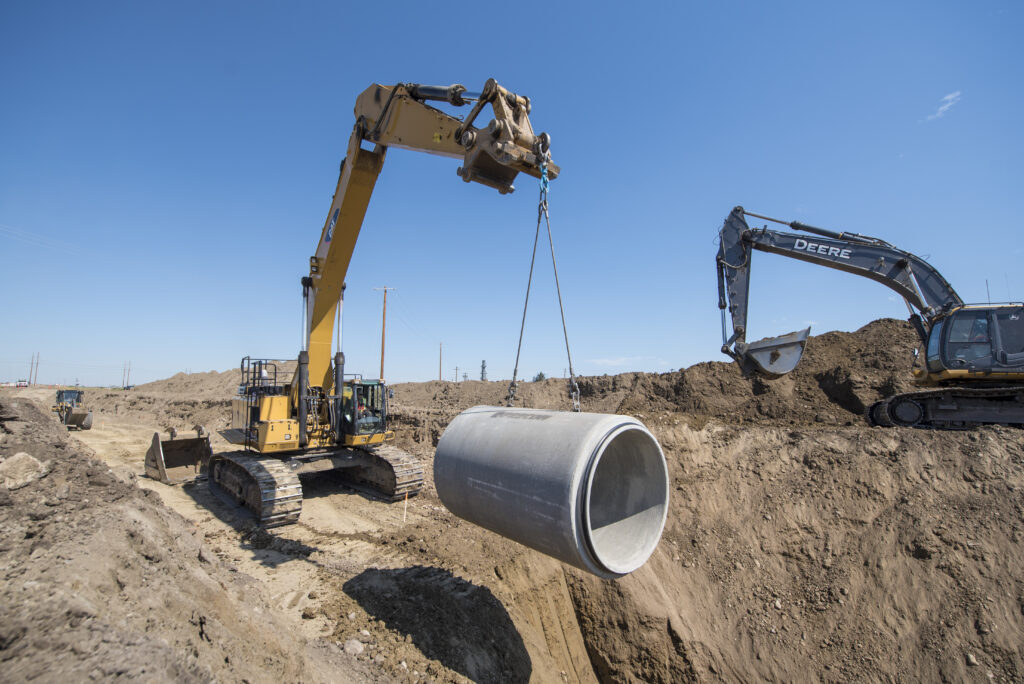
Flexible pipe systems and rigid pipe systems were reviewed during the design process for the Northwest Storm Trunk. Upon analysis of the project conditions, both MPE and the City of Medicine Hat concluded that flexible pipe systems were not suitable for the Northwest Storm Trunk; as such only rigid RCP was specified.
The decision to use RCP was based on the following project challenges:
- Depth of bury
– The selected alignment had approximately 800m of pipe buried between 6m and 8m deep and over 300m of pipe buried between 8m and 10m deep. - Expected significant groundwater infiltration within the pipe zone and poor quality loose native soils
– Geotechnical investigations indicated that ground water would be above the pipe depth for portions of the alignment and to expect varying native soils including loose to very loose gravelly, sandy, wet soils.
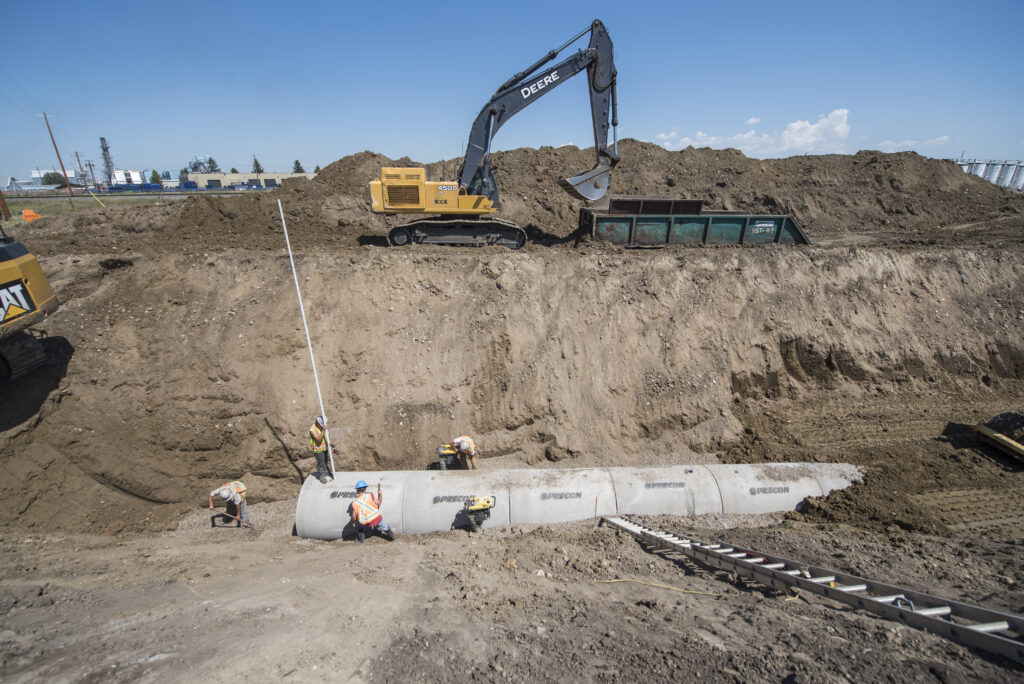
The flexible pipe design for sections of this project would require specifying Class I material compacted to 95 percent. Although it is possible to design an embedment material and compaction effort to support a flexible pipe installation, it was our opinion that it is not practical to assume a contractor will consistently achieve greater than 95 percent compaction within the pipe embedment zone especially with large diameter pipe, at significant depths, while facing groundwater infiltration and loose soils.
The inherent strength of RCP compensates for any construction shortcomings dealing with trench depths and trench conditions rather than relying on the pipe embedment for strength. Specifying RCP carried less risk in the installation for this project. RCP allowed for a more consistent installation as it is less structurally dependent on bedding and haunching which would have been very challenging to install adequately to support other pipe materials in the wet trench conditions.
Also, the shorter pipe lengths of RCP allowed for easier install in deep, wet, loose native trench conditions versus a 6m long section of flexible pipe.
Furthermore, at the depths and conditions expected, there was negligible expected cost savings specifying flexible pipe systems over RCP. With at least three RCP manufacturers in Alberta alone, competitive pricing was seen in the tender and the project is coming in on-budget.
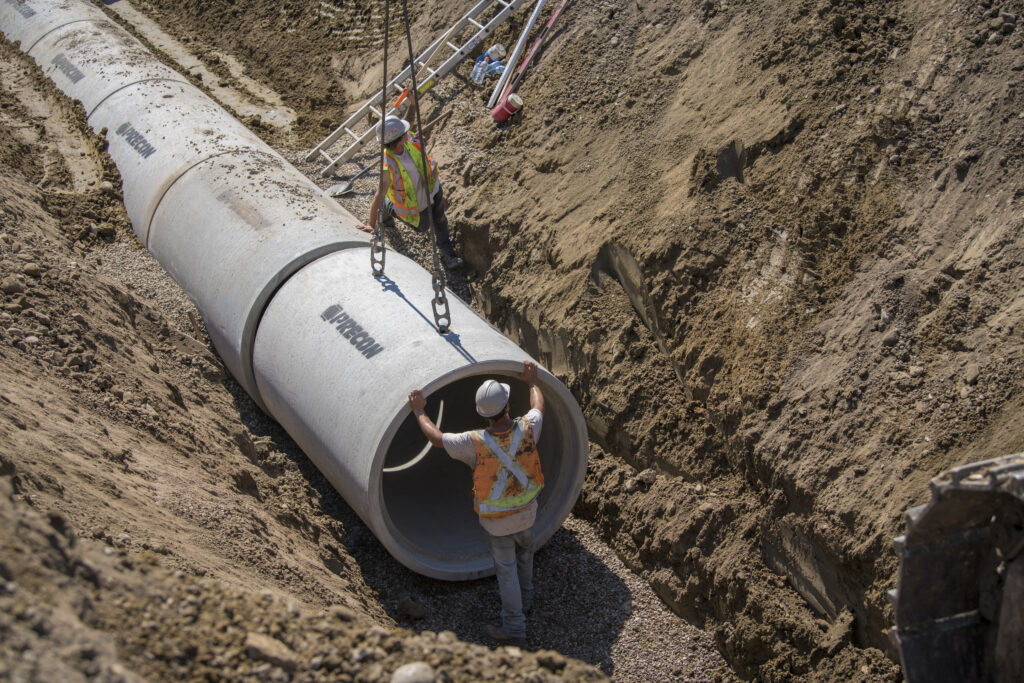
Other project challenges included:
Steep Grades
Long Segments of the Northwest Storm Trunk have grade in excess of 6 percent. The potential for pipe abrasion was reviewed with RCP pipe manufacturers. Energy dissipation structures were designed to reduce the energy grade line of the Northwest Storm Trunk and manhole structures required reinforcement to prevent scouring.
Access to properties
The Northwest Storm Trunk alignment is located within existing roads and installation required road closures. To maintain access to residences and businesses along the route the project had to be phased around important intersections. Temporary roads were constructed parallel to the workspace to maintain through traffic. Effected property owners were engaged during the design phase to discuss access requirements and review options. By engaging the effected property owners during design and having them provide input on the temporary access design, it reduced the frustration of the property owners during construction.
RCP was critical to overcoming many of the project challenges and will provide the City of Medicine Hat with a reliable storm water trunk for many years.
By: Greg Christensen, P.Eng. Project Manager, MPE Engineering Ltd.
